News Articles
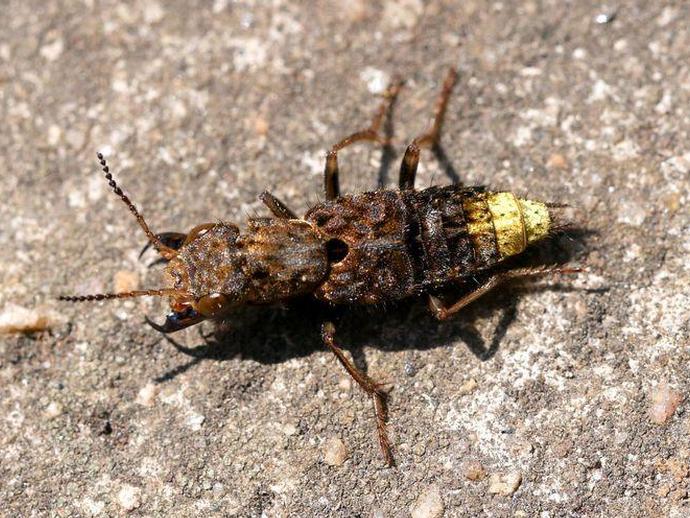
We're reaching into the archives for today's #BenInNature update presented by our friends at ...
July 31, 2021
We're reaching into the archives for today's #BenInNature update presented by our friends at Carter Bank & Trust! The following post was originally published on July 17, 2020. Now here's something you don't see every day -- and in fact, I don't recall ever seeing one before I found this one. This is Ontholestes cingulatus, the gold and brown rove beetle! Rove beetles belong to the family Staphylinidae, which contains about 63,000 species across thousands of genera! It's an ancient family of beetles and may well be the single largest family of organisms still in existence! The easiest way to spot a rove beetle is by its elytra, which are the hard shells that cover a beetle's flight wings. The elytra on rove beetles are ...
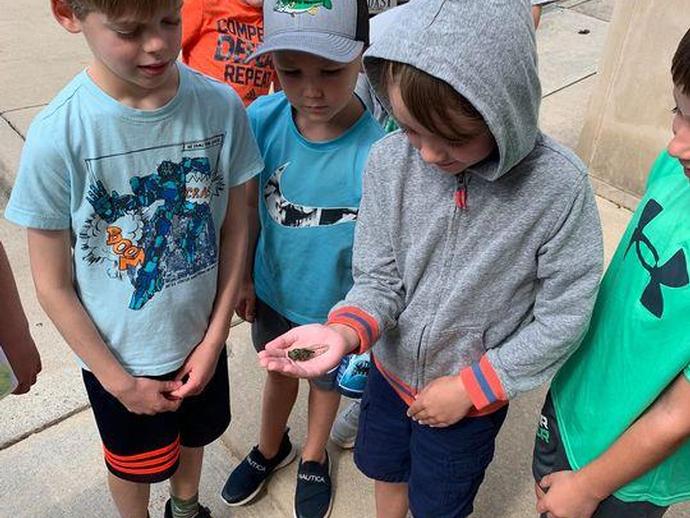
Campers ages 6 to 8 learned what it takes to survive like a bug during our "Busy Bugs" Summer ...
July 30, 2021
Campers ages 6 to 8 learned what it takes to survive like a bug during our "Busy Bugs" Summer Adventure Camp this week! Campers learned all about these tiny creatures by observing behaviors, making crafts, playing games and participating in other hands-on activities presented by VMNH educators and research staff! Thanks to all participants for helping make our final camp of the year so special!
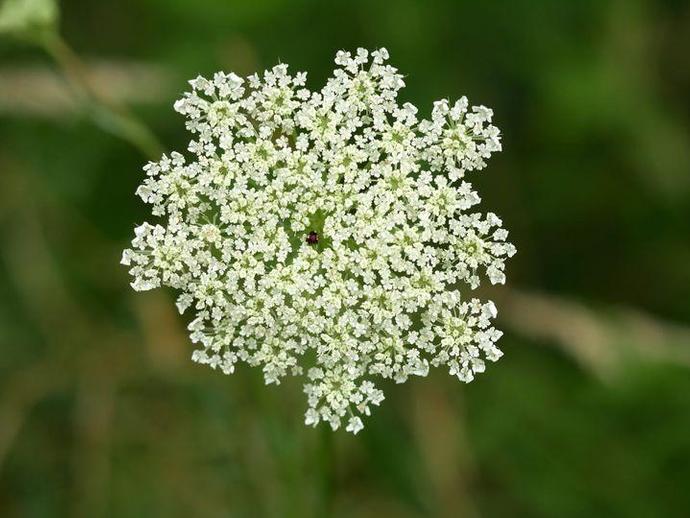
Ben here with the Friday edition of #BenInNature presented by our friends at Carter Bank & Trust!
July 30, 2021
Ben here with the Friday edition of #BenInNature presented by our friends at Carter Bank & Trust! I've showcased a bunch of spiders and parasitic flies this week, so let's close out the week with a nice, pleasant flower: Daucus carota, also known as Queen Anne's lace! This plant goes by a few other names, including wild carrot, bishop's lace, and bird's nest, but Queen Anne's lace was the name my grandma taught me. According to the folklore surrounding the plant, it's named after either Anne, Queen of Great Britain, or her great grandmother, Anne of Denmark. As the story goes, the flowers resemble lace and the single red flower in the center is supposed to be a drop of blood from where Anne pricked her finger while ...
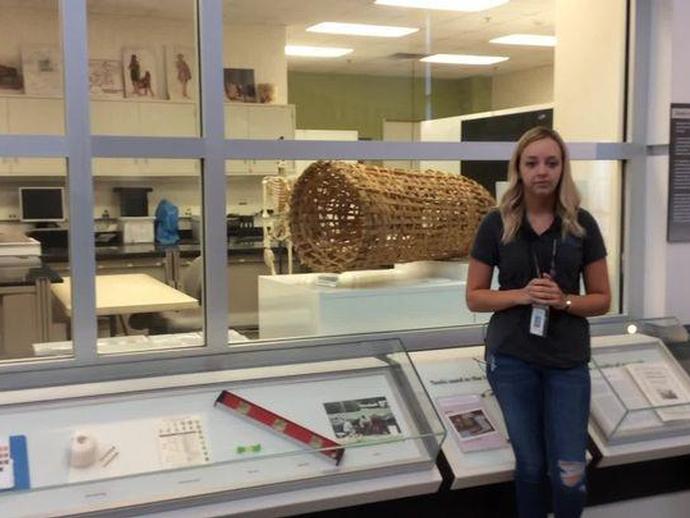
VMNH Educator Terri Robertson is back with a brand new episode of "Museum Minute"!
July 30, 2021
VMNH Educator Terri Robertson is back with a brand new episode of "Museum Minute"! Today's episode highlights the array of projectile points on display inside the museum's archaeology lab and Uncovering Virginia exhibit! ABOUT MUSEUM MINUTE The Virginia Museum of Natural History has a spectacular assortment of displays within its exhibit galleries! Some displays are unforgettable, while others don't always get the attention they deserve. Through the original series "Museum Minute", museum educators highlight various displays throughout the exhibit galleries, while providing intriguing facts you may not have known. "Museum Minute" is made possible thanks to VMNH Corporate Partners Carter Bank & Trust (www.cbtcares.com) and ...
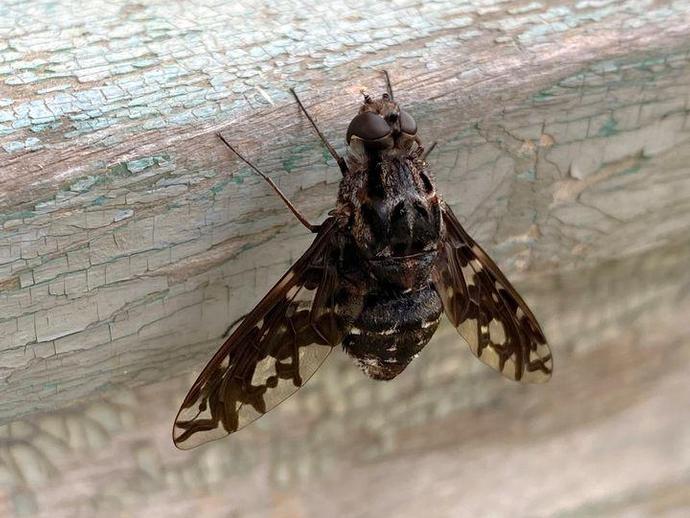
Ben here with today's edition of #BenInNature presented by our friends at Carter Bank & Trust!
July 29, 2021
Ben here with today's edition of #BenInNature presented by our friends at Carter Bank & Trust! This is Xenox tigrinus, also known as the tiger bee fly! This large, unusual-looking fly is perfectly harmless to humans, and it's also a pollinator. And if you have a wood deck, it may just be your new best friend. Like other members of the family Bombyliidae, also known as the bee flies, Xenon tigrinus parasitizes the larvae of another species of insect; in this case, Xylocopa virginica, the eastern carpenter bee. If you have a wood deck or exposed wood anywhere outside your home, you're probably intimately familiar with the tunnels that carpenter bees chew in your wood so they can build a nest and lay their eggs. The tiger ...

Ben here with the Wednesday edition of #BenInNature presented by our friends at Carter Bank & ...
July 28, 2021
Ben here with the Wednesday edition of #BenInNature presented by our friends at Carter Bank & Trust! I recently had some work done on my garage which included the installation of a new gutter on one side. The ground is high enough on that side of the garage that the gutter comes to chest level on me, and I've discovered that it's an amazing bug trap! I check it every day to see what critters are hanging out in there and rescue any that might be in distress. For example: this bold jumping spider (Phidippus audax)! This spider was pretty drenched from a recent downpour when I found it and I tried to pick it up with a little twig. It quickly scurried across the twig and then stopped on my thumb. I let it hang out there for ...
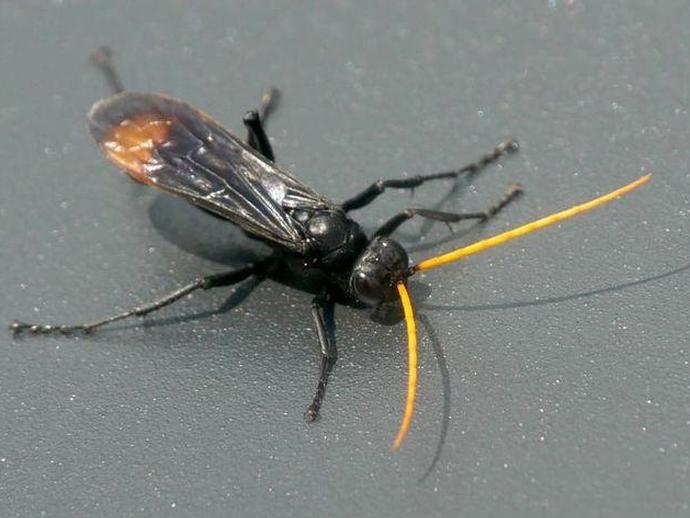
Ben here with the Tuesday edition of #BenInNature presented by our friends at Carter Bank & Trust!
July 27, 2021
Ben here with the Tuesday edition of #BenInNature presented by our friends at Carter Bank & Trust! This is Entypus unifasciatus, and if you hate creepy crawlies, it presents a real dilemma: it's a wasp, but it hunts spiders! Entypus unifasciatus is a spider wasp, which are also known as pompilid wasps (they belong to the family Pompilidae). There are more than 5,000 species in this family, and this one is the most common here in Virginia; in fact, it can be found throughout almost all of North America! The females of this species are generally seen in late summer and early fall, and the adults don't feed on spiders themselves; they drink nectar from flowers. When the females find a large spider, they fly down and ...
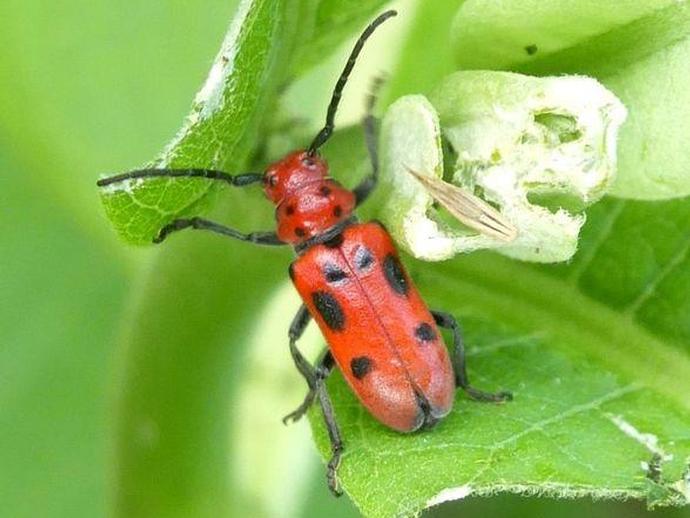
Ben is taking a well-deserved day off today ...
July 26, 2021
Ben is taking a well-deserved day off today, so we're reaching into the archives for today's #BenInNature update presented by our friends at Carter Bank & Trust! The following post was originally published on July 16, 2020. Yesterday we looked at common milkweed (Asclepias syriaca). Today, let's look at a critter that you're likely to find living on milkweed: Tetraopes tetrophthalmus, the red milkweed beetle! Both the genus name and species name of this beetle mean "four eyes," which comes from an unusual feature of this beetle: their antennae are positioned so far forward on their heads that the base of the antennae bisect the beetle's eyes, giving it the appearance of four eyes! Just like monarch butterfly ...

We're reaching into the archives for today's #BenInNature update presented by our friends at ...
July 25, 2021
We're reaching into the archives for today's #BenInNature update presented by our friends at Carter Bank & Trust! The following post was originally published on July 15, 2020. This is Asclepias syriaca, also known as common milkweed or butterfly flower. This common plant can be found throughout much of the US east of the Rocky Mountains, but there are plenty of other types of milkweed that can be found out west. If you find a patch of milkweed, you'll likely notice that there are a wide variety of insects that eat milkweed, including the caterpillars of monarch butterflies! You might think that milkweed is just a naturally delicious plant; however, it's trying its best to be the exact opposite. When you break any part ...
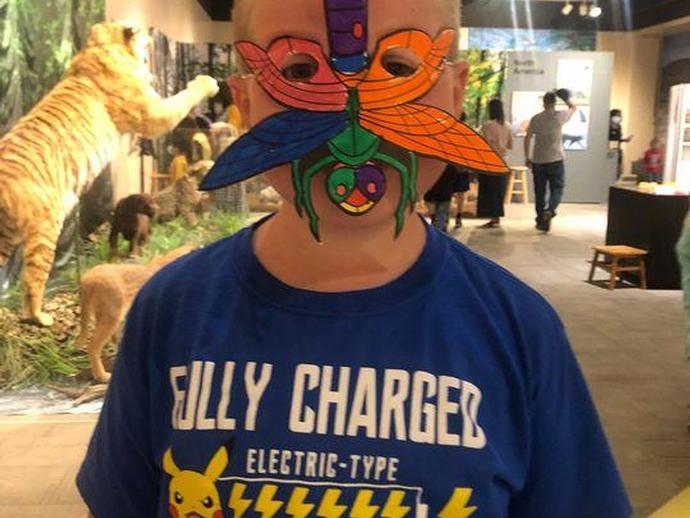
We had a blast hosting Bug Day 2021 at the museum today!
July 24, 2021
We had a blast hosting Bug Day 2021 at the museum today! The event featured a large variety of preserved and live specimens from the VMNH collections, bug collecting demonstrations, a fly tying display, an insect pinning demo, balloon animals, kids' crafts and more! Thank you to all participants for coming out and making today so special, and thank you to all of the staff, volunteers and colleagues who helped make this event a success!
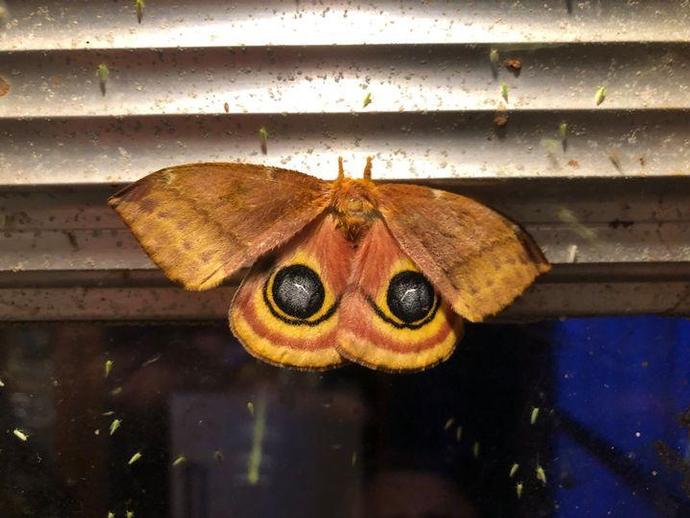
We're reaching into the archives for today's #BenInNature update presented by our friends at ...
July 24, 2021
We're reaching into the archives for today's #BenInNature update presented by our friends at Carter Bank & Trust! The following post was originally published on July 14, 2020. When its wings are folded, the Io moth (Automeris io) probably wouldn't warrant a second glance; however, when its wings are extended to reveal the huge predator-deterring eyespots on its hindwings, it definitely leaves an impression! These beautiful moths belong to the family Saturniidae, and they can be found throughout the east coast and into the midwest. We looked at another moth from this family back in early June: Callosamia angulifera, the tulip tree silkmoth. Like all members of the family Saturniidae, adult Io moths do not eat and ...
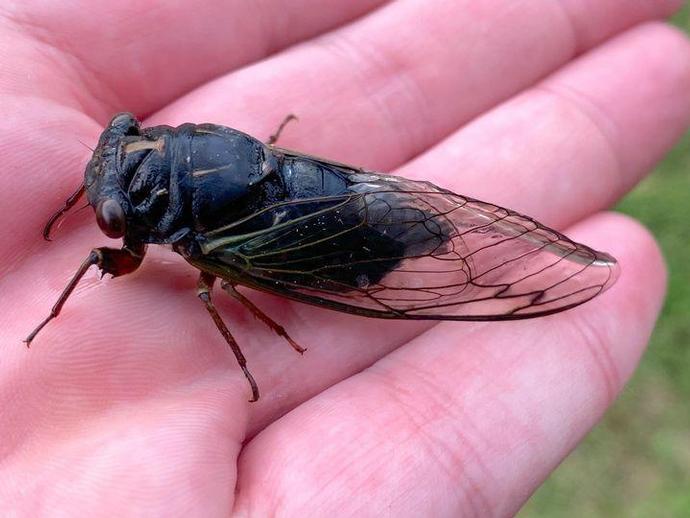
Ben here with the Friday edition of #BenInNature presented by our friends at Carter Bank & Trust!
July 23, 2021
Ben here with the Friday edition of #BenInNature presented by our friends at Carter Bank & Trust! While periodical cicada Brood X didn't stretch into southside Virginia (we got our brood of periodical cicadas last summer), that doesn't mean there aren't still cicadas to enjoy! I rescued this little guy from my gutter this week. If he looks a little water-logged, that's why. This is one of our annual cicadas, which are the cicadas that show up every summer. This particular one belongs to the genus Neotibicen, and they're also referred to as "harvestflies" or "jar flies." They're larger than the periodical cicadas we see every 13-17 years, and they also tend to have darker, more muted coloration. Even though Neotibicen ...
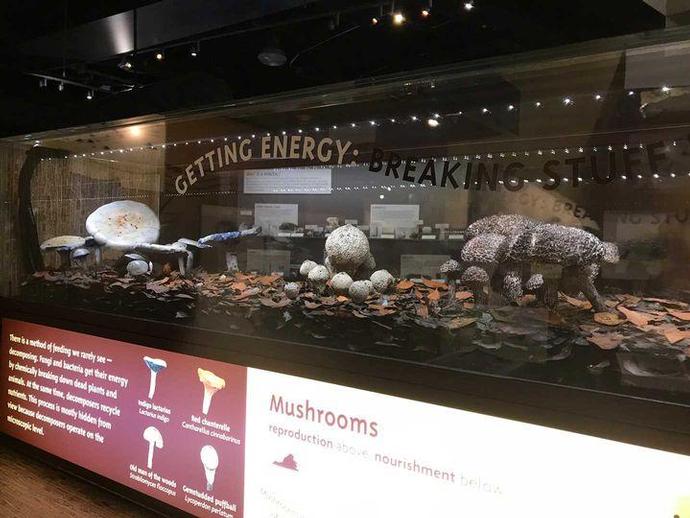
VMNH Education Manager Christy Deatherage is inside the museum's Lee & George W
July 23, 2021
VMNH Education Manager Christy Deatherage is inside the museum's Lee & George W. Lester, II How Nature Works gallery to highlight the mushroom display in this week's episode of "Museum Minute"! ABOUT MUSEUM MINUTE The Virginia Museum of Natural History has a spectacular assortment of displays within its exhibit galleries! Some displays are unforgettable, while others don't always get the attention they deserve. Through the original series "Museum Minute", museum educators highlight various displays throughout the exhibit galleries, while providing intriguing facts you may not have known. "Museum Minute" is made possible thanks to VMNH Corporate Partners Carter Bank & Trust (www.cbtcares.com) and Boxley Materials Company ...
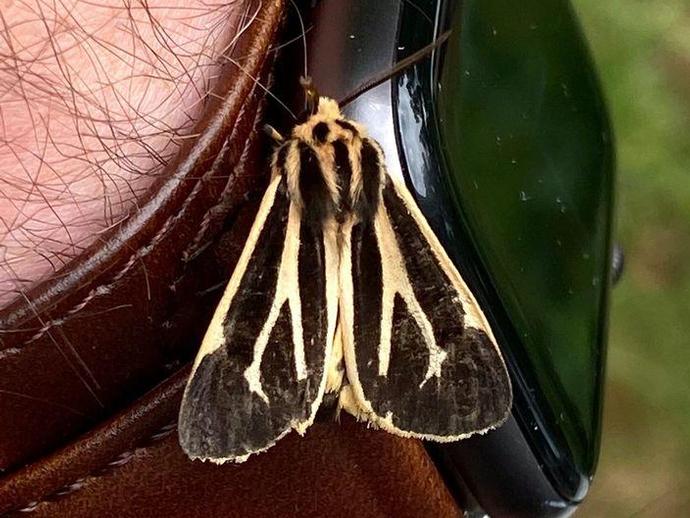
Ben here with the Thursday edition of #BenInNature presented by our friends at Carter Bank & ...
July 22, 2021
Ben here with the Thursday edition of #BenInNature presented by our friends at Carter Bank & Trust! This is a tiger moth (genus Apantesis), and for the past month or so I've seen a slew of them. They're usually one of the first arrivals to my porch light when dusk arrives and I can count on seeing anywhere between 6-10 on a given night. While these are smaller moths, they're quite striking with their tiger-stripe wing patterns and pinkish hindwings. Although they may look quite distinctive, it's difficult to narrow these guys down to species. When it comes to their markings and coloration, they aren't 100 percent consistent. In fact, the only way to reliably identify these moths to species is by dissecting and examining ...

We decorated the building with a new banner today!
July 21, 2021
We decorated the building with a new banner today!
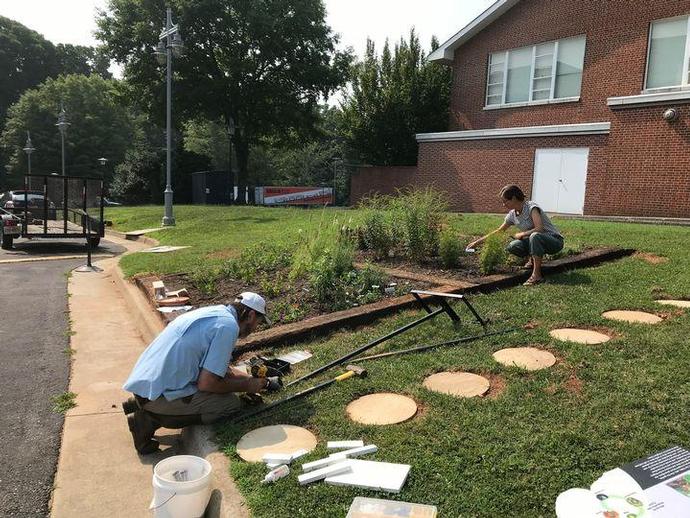
Dan River Basin Association (DRBA) staff Brian Williams and Krista Hodges were busy today ...
July 21, 2021
Dan River Basin Association (DRBA) staff Brian Williams and Krista Hodges were busy today sprucing up the new Jim Tobin Monarch Waystation in preparation of its unveiling to VMNH Members and supporters during an invitation-only reception tomorrow evening at the museum. The butterfly habitat will make its public debut during Bug Day 2021 this Saturday!

In this special episode of "Tales of Ancient Life", Assistant Curator of Paleontology Dr
July 21, 2021
In this special episode of "Tales of Ancient Life", Assistant Curator of Paleontology Dr. Adam Pritchard provides a video tour of one of the two major dinosaur fossil sites he and the dig crew have been excavating this past month in Greybull, Wyoming! Special thanks to Carter Bank & Trust (www.cbtcares.com) and Boxley Materials Company (www.boxley.com) for helping make this episode possible! ABOUT TALES OF ANCIENT LIFE Our planet has an incredible story to tell and VMNH Assistant Curator of Paleontology Dr. Adam Pritchard helps share it through his original video series, "Tales of Ancient Life". Dr. Pritchard uses spectacular fossils and other scientific specimens from the museum's paleontology collections to highlight ...
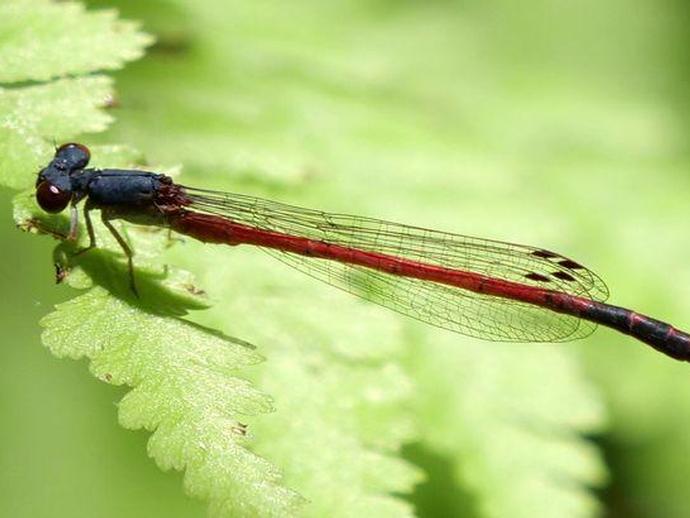
Ben here with today's edition of #BenInNature presented by our friends at Carter Bank & Trust!
July 21, 2021
Ben here with today's edition of #BenInNature presented by our friends at Carter Bank & Trust! This is Amphiagrion saucium, the eastern red damsel, and it's a fairly common damselfly. However, it's pretty easily overlooked due to its small size and its tendency to hide in thick vegetation! Damselflies belong to the suborder Zygoptera in the order Odonata, which also contains the dragonflies. Damselflies and dragonflies are pretty closely related, and they're both ancient insects. The easiest way to tell the difference is that damselflies fold their wings over their back when they land while dragonfly wings stick straight out. Much like dragonflies, damselflies are predators; they eat tiny aquatic insects while they're ...
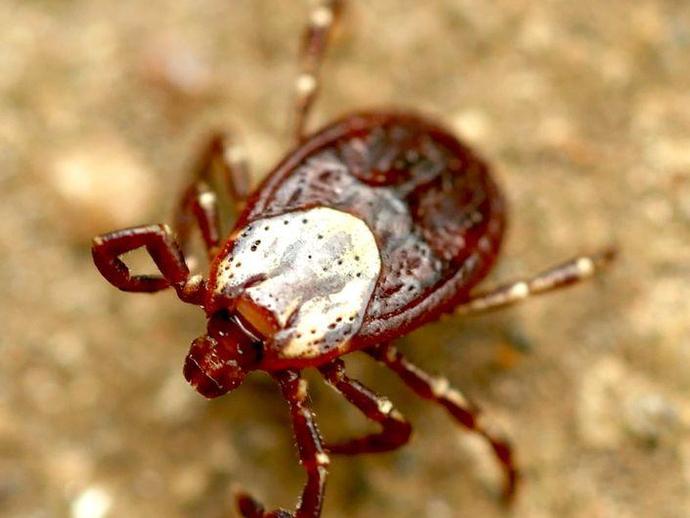
Ben here with another edition of #BenInNature presented by our friends at Carter Bank & Trust!
July 20, 2021
Ben here with another edition of #BenInNature presented by our friends at Carter Bank & Trust! The subject of today's nature post ain't gonna win any popularity contests. It's Dermacentor variabilis, the American dog tick! I'll be honest, even I have a hard time mustering much enthusiasm for ticks, and I'm a guy who has described multiple species of spiders as "beautiful." Still, ticks do have their benefits, believe it or not. They serve as a food source for reptiles, amphibians, birds, and other animals (opossums LOVE eating ticks). They also help control wild animal populations. Scientists even use them as an indicator that an ecosystem is stable and healthy. Ticks do serve a purpose, but I'm not going to be the one ...
It may look like a push mower ...
July 19, 2021
It may look like a push mower, but don't let that fool you; ground-penetrating radar (GPR) is changing the way archaeologists excavate the past by allowing more speed and accuracy than has ever before been possible.
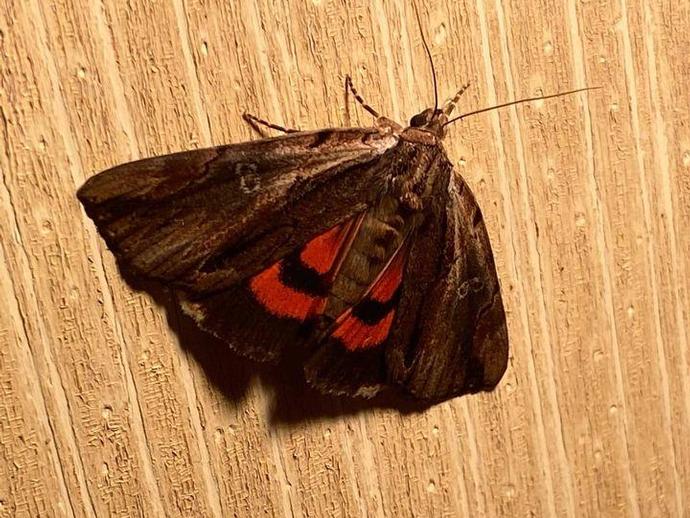
Ben here with the Monday edition of #BenInNature presented by our friends at Carter Bank & Trust!
July 19, 2021
Ben here with the Monday edition of #BenInNature presented by our friends at Carter Bank & Trust! At this point, I should just put together a coffee table book of cool moths. Case in point: this underwing moth, most likely the species Catocala ultronia, the ultronia underwing! Underwing moths are the sleeper hotrods of the moth world. When their wings are folded, they look fairly drab. However, when they take flight or part their wings, they reveal brightly colored hindwings! These hindwings can be orange, white, red, or even blue! It's believed that the purpose of these visually striking hindwings is to startle predators; when the moths take flight, the bright wings supposedly resemble the eyes of another predator and ...

We're reaching into the archives for today's #BenInNature update presented by our friends at ...
July 18, 2021
We're reaching into the archives for today's #BenInNature update presented by our friends at Carter Bank & Trust! The following post was originally published on July 13, 2020. This critter is Marmota monax, but it goes by many common names, including groundhog, woodchuck, and whistlepig. My grandpa was always partial to that last one; as he explained it, when you see a groundhog and whistle at it, it will sit up on its hind legs ("And that's when you shoot it," he would add; he wasn't a big fan of groundhogs). There is some truth to that; if a groundhog is startled, it will rear back on its hindlegs, stand motionless for a moment, and then whistle to alert other groundhogs of potential danger! Groundhogs can be found ...

We're reaching into the archives for today's #BenInNature update presented by our friends at ...
July 17, 2021
We're reaching into the archives for today's #BenInNature update presented by our friends at Carter Bank & Trust! The following post was originally published on July 12, 2020. This little guy is Oncometopia orbona, which goes by one of my favorite common names of all time: the broad-headed sharpshooter! I think Lee Van Cleef was called that in a western once... The broad-headed sharpshooter is a type of leafhopper belonging to the family Cicadellidae. These insects use tiny piercing mouthparts to suck the juices from plants. They also have modified hind legs that allow them to jump with incredible speed and distance (comparatively speaking). In fact, the nymphs of one species of leafhopper -- Issus coleoptratus -- ...
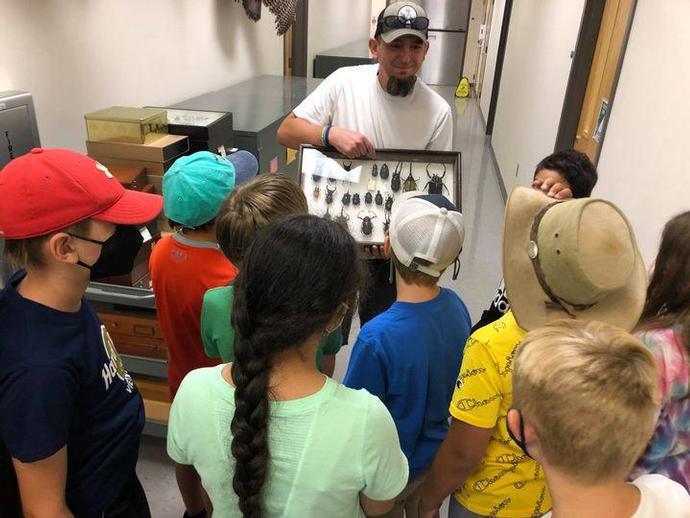
Insects are the most abundant animals on earth and this week's "Insect Investigations" camp at ...
July 16, 2021
Insects are the most abundant animals on earth and this week's "Insect Investigations" camp at VMNH offered an abundance of fun! Campers ages 9 to 11 explored the world of insects through lessons provided by the museum's expert entomologists and participated in a wide variety of insect-themed crafts and outdoor activities led by the museum's education department! Thanks to all participants for helping make this week's camp so memorable!

Yesterday, VMNH Associate Curator of Recent Invertebrates Dr
July 16, 2021
Yesterday, VMNH Associate Curator of Recent Invertebrates Dr. Kal Ivanov and Myriapodologist Dr. Jackson Means visited the ONE Forest School in Huddleston, Virginia for a morning of collecting and talking "bugs". In attendance were 22 students, ages 3-12, and boy did they have a great time! The day began with a discussion about what bugs are, a show and tell of bugs native to Virginia, displays of charismatic tropical arthropods, as well as demonstrations of various collecting techniques. Afterwards, Drs. Ivanov and Means took the students to a nearby field and everybody got to try their hand at catching bugs with sweep and aerial nets. The action-packed morning ended with a hike to a small wooded creek in search of even ...
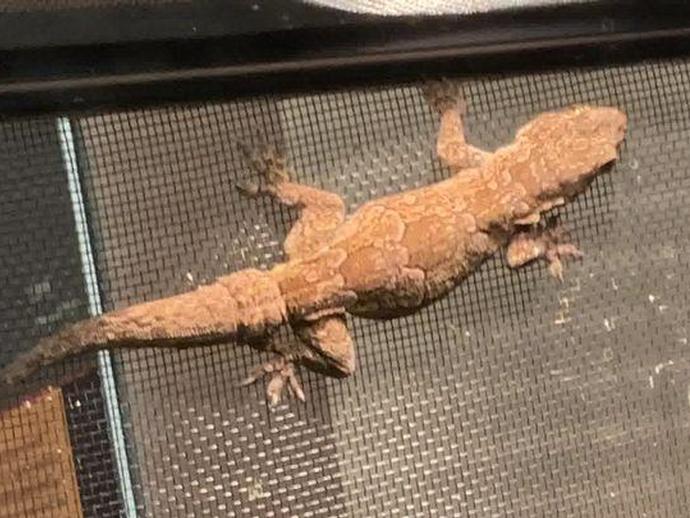
It's time to gecko-ing with this week's episode of "Museum Minute"!
July 16, 2021
It's time to gecko-ing with this week's episode of "Museum Minute"! Though frequently hidden inside its habitat, "Merret", the museum's Asian house gecko, resides inside the museum's Suzanne M. Lacy Education Center and is the focus of this week's episode of "Museum Minute" with VMNH Educator Terri Robertson! ABOUT MUSEUM MINUTE The Virginia Museum of Natural History has a spectacular assortment of displays within its exhibit galleries! Some displays are unforgettable, while others don't always get the attention they deserve. Through the original series "Museum Minute", museum educators highlight various displays throughout the exhibit galleries, while providing intriguing facts you may not have known. "Museum Minute" is ...

Ben here with the Friday edition of #BenInNature presented by our friends at Carter Bank & Trust!
July 16, 2021
Ben here with the Friday edition of #BenInNature presented by our friends at Carter Bank & Trust! This is the eastern cottontail Sylvilagus floridanus, and it's the most common rabbit species in North America. It can be found in every county in Virginia. For whatever reason, I've seen more of these guys on my property this year than I ever remember seeing before. There's even one living under my house! I have yet to see the first rent payment, though. Eastern cottontails are mostly found in the eastern half of the U.S., although there are also some populations in the Pacific Northwest. Their range extends down into Mexico, Central America, and even the northernmost parts of South America. It originally was not found in ...

Ben here with today's edition of #BenInNature presented by our friends at Carter Bank & Trust!
July 15, 2021
Ben here with today's edition of #BenInNature presented by our friends at Carter Bank & Trust! The American carrion beetle (Necrophila americana) is a pretty fascinating insect, if a little bit gross! These beetles can be found in North America east of the Rocky Mountains, and they play an important role in keeping the environment clean and tidy. American carrion beetles are on the wing from the spring through the fall, searching for the carcasses of animals that have recently died. A couple of hours after flies find the carcass, the carrion beetles arrive. The adult beetles will start eating the fly larvae, and then they'll mate and lay eggs. The adults will then hang around for as long as the carcass lasts in order to ...
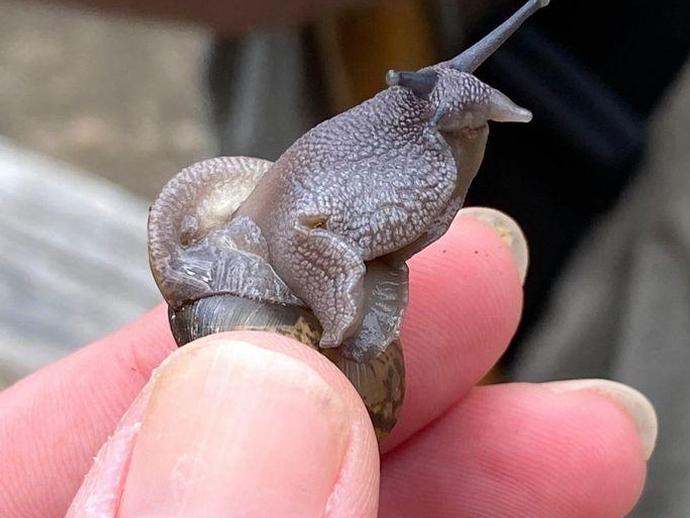
Ben here with the Wednesday edition of #BenInNature presented by our friends at Carter Bank & ...
July 14, 2021
Ben here with the Wednesday edition of #BenInNature presented by our friends at Carter Bank & Trust! Here we see a pretty sizable land snail (and you can also see the little present it left on my hand). I'm not going to even attempt to identify this snail to species because snails are notoriously difficult to narrow down if you're not an expert. However, I can share some cool general snail facts! As snails grow, their shells grow too, and the shape of a snail's shell is known as a "logarithmic spiral." It's a shape found fairly often in nature, in everything from mollusk shells to the bands of a hurricane to the arms of spiral galaxies! To build their shells, snails secrete calcium carbonate around the edge of the ...
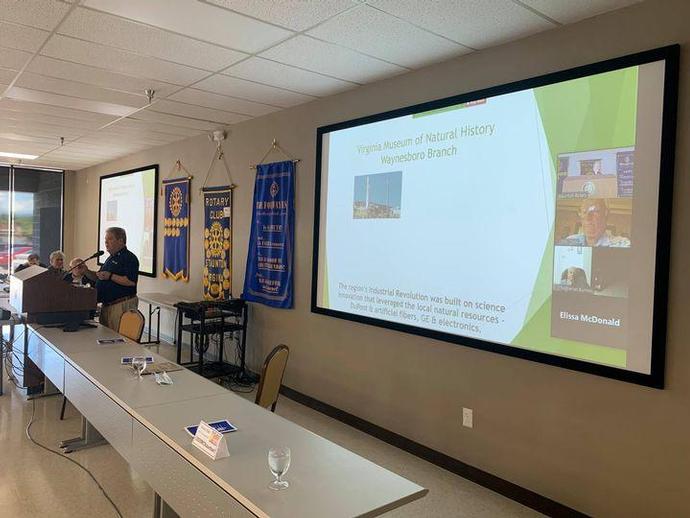
Excitement continues to grow for the future VMNH-Waynesboro branch campus!
July 13, 2021
Excitement continues to grow for the future VMNH-Waynesboro branch campus! VMNH Foundation Board Member Len Poulin was in Staunton today to address the Rotary Club of Staunton and describe the future impacts that the upcoming branch campus will have on the region. To be located at the corner of W. Main and Arch Streets in Downtown Waynesboro, VMNH-Waynesboro will contain approximately 20,000 square feet of exhibits, classrooms, and visible laboratories, as well as a planned green roof overlooking South River and the Blue Ridge Mountains.
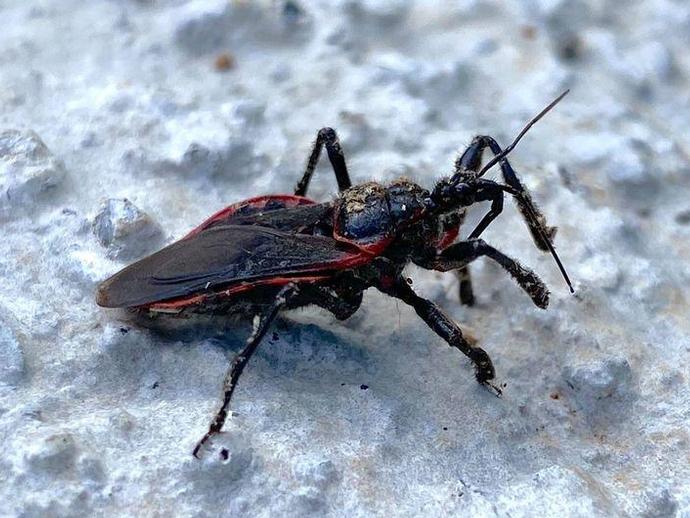
It's time for the Tuesday edition of #BenInNature presented by our friends at Carter Bank & Trust!
July 13, 2021
It's time for the Tuesday edition of #BenInNature presented by our friends at Carter Bank & Trust! Assassin bugs like this Apiomerus crassipes are some of the apex predators of the insect world, hiding amongst the leaves of flowering plants and waiting for an unfortunate insect to come along ... at which point they strike, jabbing their sharp proboscis into their prey and sucking it dry! Apiomerus crassipes is commonly called the "bee assassin," although that name is a bit of a misnomer. While there are claims that these assassin bugs actively prey on honeybees, there isn't much concrete evidence to support those claims. At the very least, it's doubtful that they have any sort of preference for honeybees, instead ...

BUG DAY 2021 is Saturday, July 24 and registrations are still being accepted!
July 13, 2021
BUG DAY 2021 is Saturday, July 24 and registrations are still being accepted! Pre-registration is required to attend. Visit www.vmnh.net/events/bug-day-2021 to learn more and register online today!

It's time for today's edition of #BenInNature presented by our friends at Carter Bank & Trust!
July 12, 2021
It's time for today's edition of #BenInNature presented by our friends at Carter Bank & Trust! I'll be the first to admit that this isn't a great picture; the subject flew away while I was frantically scrabbling to grab a real camera. However, this critter is so interesting that I'm going to do a post about it anyway. The people need to know about Megarhyssa macrurus, the long-tailed giant ichneumon wasp! First things first, that long black stinger-looking thing is indeed part of the wasp, making this one of the longest (if not THE longest) insects you'll find in Virginia! However, we have nothing to fear from this wasp because that isn't actually a stinger. It's an ovipositor, which is a tube-like organ that most ...
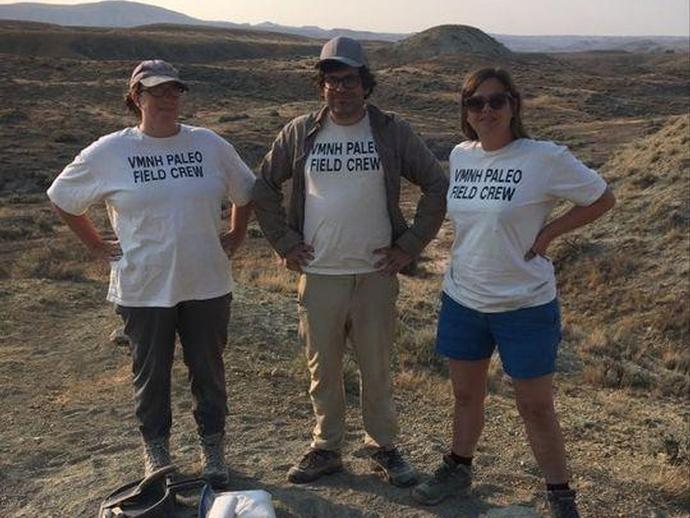
What do paleontologists wear to the field? Branded t-shirts! Drs
July 11, 2021
What do paleontologists wear to the field? Branded t-shirts! Drs. Brooke Wilborn Haiar, Adam Pritchard, and paleo tech Battle-Ax Lucy Treado show off their VMNH field crew shirts, complete with instructions of who to ask your fossil questions! Fossil finds continue apace, with William & Mary student Anna Jordan discovering a large portion of a long-necked dinosaur arm bone! Although it's several feet long, it likely belonged to a smaller dinosaur, "only" about as long as a school bus.
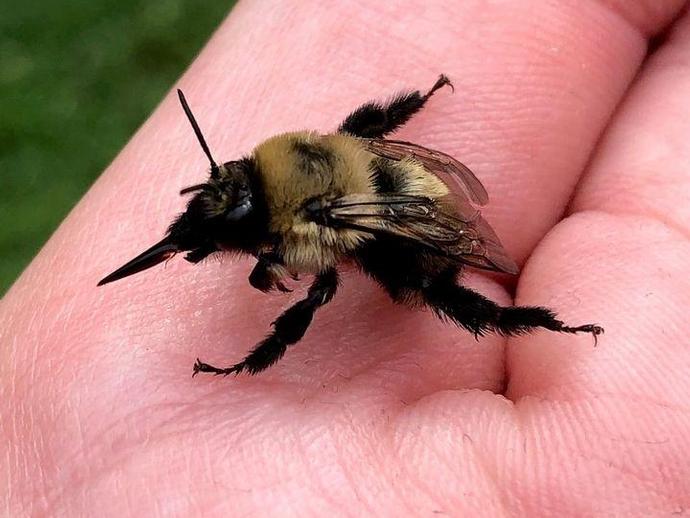
We're reaching into the archives for today's #BenInNature update presented by our friends at ...
July 11, 2021
We're reaching into the archives for today's #BenInNature update presented by our friends at Carter Bank & Trust! The following post was originally published on July 11, 2020. Have you ever seen a bumblebee stick out its tongue? You have now! According to VMNH Associate Curator of Invertebrate Zoology Dr. Kal Ivanov, this bumblebee is most likely Bombus impatiens, the common eastern bumblebee (any uncertainty is the result of my photography, not Dr. Ivanov's expertise). These bumblebees can be found in temperate forests in the eastern U.S., southern Canada, and the eastern portion of the Great Plains. They're highly adaptable and they're a crucially important pollinator species. Many commercial farms buy huge numbers ...

We're reaching into the archives for today's #BenInNature update presented by our friends at ...
July 10, 2021
We're reaching into the archives for today's #BenInNature update presented by our friends at Carter Bank & Trust! The following post was originally published on July 10, 2020. Over the last couple of days, we've looked at two aerial predators that hunt by day. Let's close out the week by looking at an aerial predator that hunts in the evening: Ululodes quadripunctatus, the four-spotted owlfly. While some owlflies are diurnal, meaning they hunt during the day, this species hunts at twilight. As you can see, owlflies are unusual insects, sort of resembling a cross between a dragonfly and a butterfly. They have long, clubbed antennae, bulging eyes, and they often rest on plants with their abdomens sticking straight out in ...

Even the crew at the Wyoming Dinosaur Dig takes a break once in a while
July 9, 2021
Even the crew at the Wyoming Dinosaur Dig takes a break once in a while. During an evening gathering, Dr. Adam Pritchard had a chat with Science Museum of Minnesota curator Dr. Alex Hastings! Dr. Hastings talked about life in Minnesota, the fossils, his dream discovery, and coming back to visit Virginia soon!
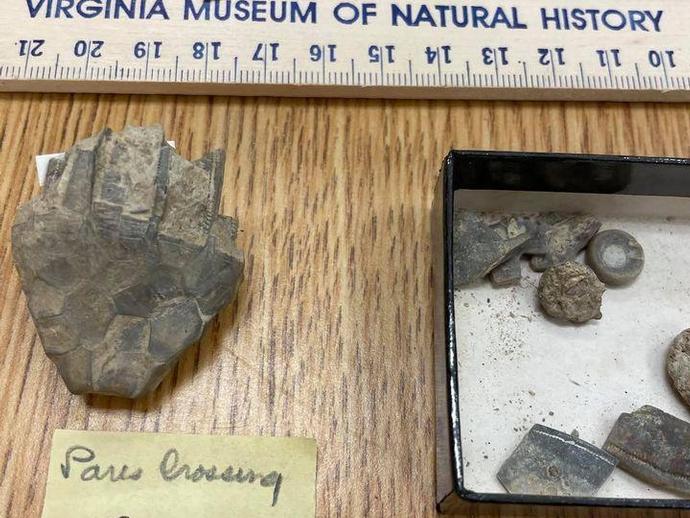
Can you identify these fossils from our paleontology collections?
July 9, 2021
Can you identify these fossils from our paleontology collections? Hint: They are Silurian age fossils from Indiana. #FossilFriday #WhatWillYouDiscover
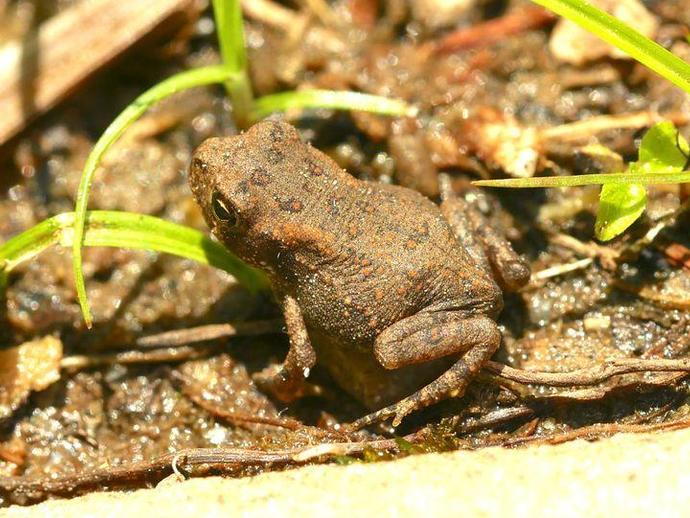
It's time for the Friday edition of #BenInNature presented by our friends at Carter Bank & Trust!
July 9, 2021
It's time for the Friday edition of #BenInNature presented by our friends at Carter Bank & Trust! Yesterday we looked at the adult eastern American toad (Anaxyrus americanus). Today, let's look at the adorable baby version! After the adult toads mate, the female lays two strings of eggs in a shallow body of water (sometimes even in puddles). Tadpoles hatch from the eggs in 2-14 days, and they're pretty easy to recognize; they have solid black bodies and very skinny tails. The tadpoles tend to stick close together and hide in vegetation to avoid being eaten by predators. They also produce toxic chemicals that discourage predators; a single tadpole is reported to be toxic enough to kill a fish! After roughly two months, ...
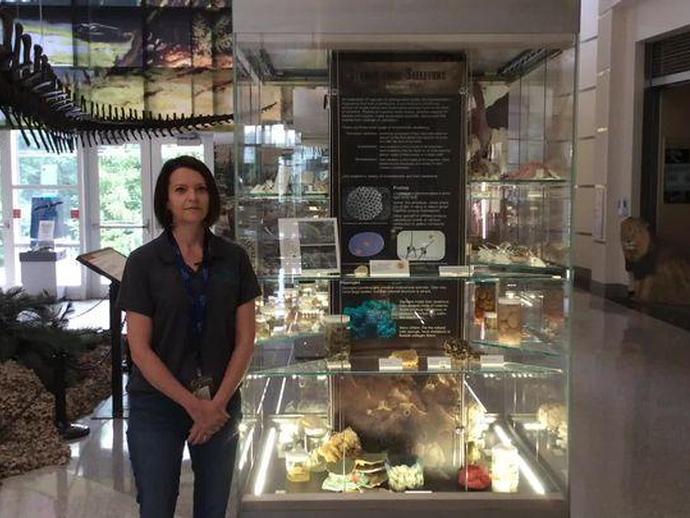
� "Who lives in a pineapple under the sea?
July 9, 2021
� "Who lives in a pineapple under the sea?"� VMNH Education Manager Christy Deatherage is inside the museum's Harvest Foundation Hall of Ancient Life to highlight the sponges found within the "Stories from Skeletons" exhibit during this week's episode of "Museum Minute"! ABOUT MUSEUM MINUTE The Virginia Museum of Natural History has a spectacular assortment of displays within its exhibit galleries! Some displays are unforgettable, while others don't always get the attention they deserve. Through the original series "Museum Minute", museum educators highlight various displays throughout the exhibit galleries, while providing intriguing facts you may not have known. "Museum Minute" is made possible thanks to ...

It's time for the Thursday edition of #BenInNature presented by our friends at Carter Bank & ...
July 8, 2021
It's time for the Thursday edition of #BenInNature presented by our friends at Carter Bank & Trust! This fellow is most likely the eastern American toad (Anaxyrus americanus americanus), and if you leave a porch light on, you've likely seen one or two camped out nearby hunting for delicious bugs. Eastern American toads are one of our most commonly seen amphibians in southwest Virginia. These toads look quite similar to Anaxyrus fowleri, the Fowler's toad, and it's often difficult to tell them apart. Fowler's toad is generally slightly smaller and it has 3 or more warts inside the dark splotches on its back while the eastern American toad only has one or two. Believe it or not, the easiest way to tell the difference ...

Trades Technician Joe Dillon was hard at work early this morning helping with the installation ...
July 8, 2021
Trades Technician Joe Dillon was hard at work early this morning helping with the installation of the Jim Tobin Monarch Waystation. The butterfly habitat will be officially unveiled at the museum's Bug Day 2021 event on Saturday, July 24! Interested in attending Bug Day 2021? We still have spaces available, but pre-registration is required to attend! More information about the event and online registration links can be found at www.vmnh.net/events/bug-day-2021! General admission rates apply. Free for VMNH Members!

Paleontology technician Lucy Treado has been working hard at the Wyoming Dinosaur Dig
July 7, 2021
Paleontology technician Lucy Treado has been working hard at the Wyoming Dinosaur Dig. Just yesterday she excavated a small, fan-shaped bone. Drs. Adam Pritchard and Alex Hastings think it could be a shoulder blade from an ancient crocodile species! One more mystery to solve in the VMNH paleo lab!
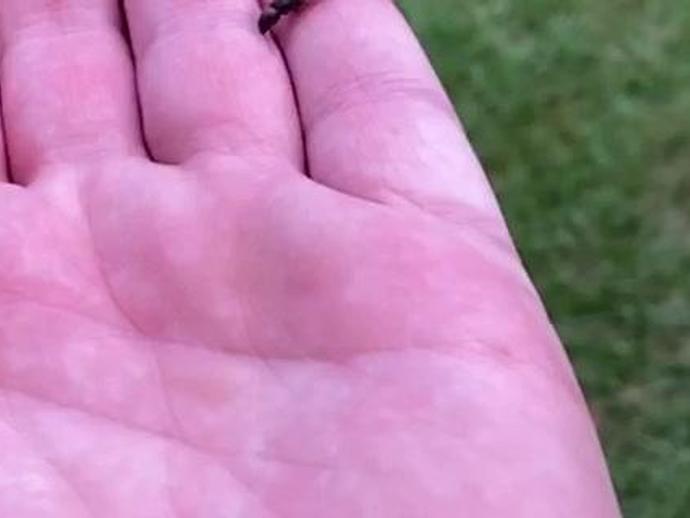
It's time for today's edition of #BenInNature presented by our friends at Carter Bank & Trust!
July 7, 2021
It's time for today's edition of #BenInNature presented by our friends at Carter Bank & Trust! Yesterday we looked at Alaus oculatus, the eastern eyed click beetle, which is one of the largest click beetles in North America. The click beetle in this slow-motion video is much smaller, but I thought it would serve as an excellent example of how click beetles get their name! Click beetles belong to the family Elateridae, and one of the things they have in common is their unique defensive mechanism. If touched or threatened, click beetles will tuck in their legs and bend their head and thorax (middle body segment) forward. There's a little spine on the thorax that fits neatly into a notch on the abdomen, locking the click ...
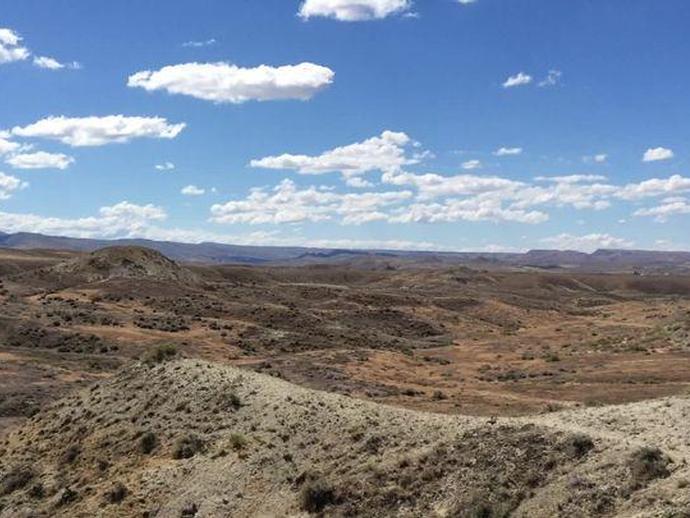
What drives the team and Dr
July 6, 2021
What drives the team and Dr. Brooke Wilborn Haiar to trek to Wyoming to find dinosaurs? Adam Pritchard chatted with Dr. Haiar about that very question during the Wyoming Dinosaur Dig!
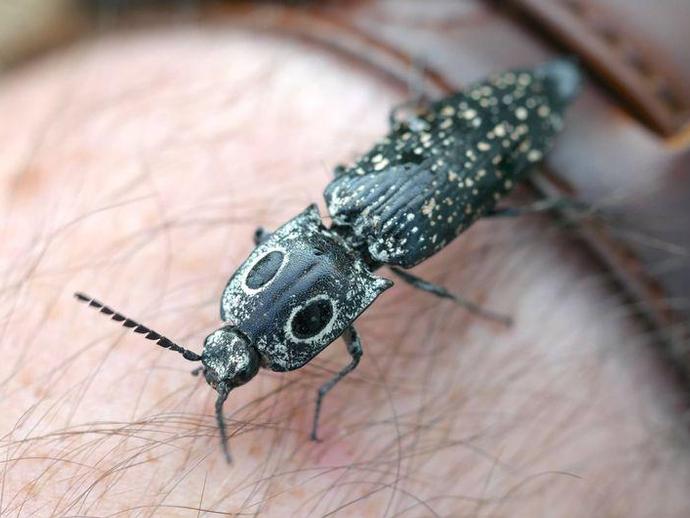
It's time for the Tuesday edition of #BenInNature presented by our friends at Carter Bank & Trust!
July 6, 2021
It's time for the Tuesday edition of #BenInNature presented by our friends at Carter Bank & Trust! I always enjoy getting nature ID requests from the public, especially if it's an unusual insect. Since March 2020, I've received more photos of this critter right here than any other insect, and I was thrilled to finally find one on my property! This is Alaus oculatus, commonly known as the eastern eyed click beetle! The eastern eyed click beetle is definitely eye-catching (no pun intended). Aside from the fact that they can reach nearly two inches in length, these beetles have pronounced dark eye spots on the pronotum (the hard plate right behind the head). These eye spots evolved as a defensive mechanism; if a potential ...
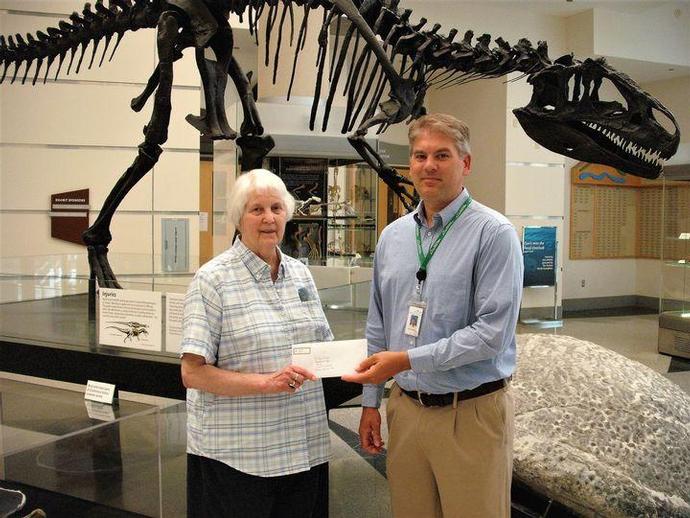
The museum recently received a generous donation of $1,000 presented by Ms
July 6, 2021
The museum recently received a generous donation of $1,000 presented by Ms. Dale Brittle, which will go to support the work of VMNH Associate Curator of Recent Invertebrates Dr. Kal Ivanov and Myriapodologist Dr. Jackson Means, successors to the work of the late Dr. Richard Hoffman. The donation will assist the two researchers with travel to remote regions of Virginia and adjacent states to collect new museum specimens (specifically millipedes, isopods and ants) and preserve specimens properly for DNA extraction. Not only will Drs. Ivanov and Means document species already known from Virginia, but they are certain to identify species new to the state and to science! If you would like to help support VMNH research programs, ...
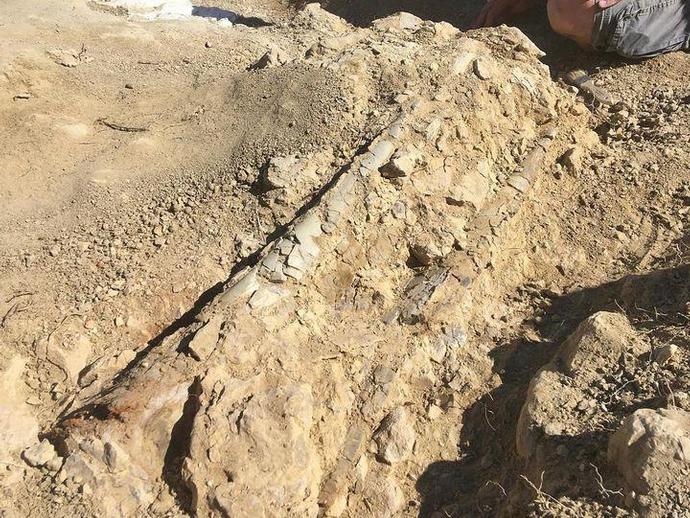
Updates from the Wyoming Dinosaur Dig!
July 5, 2021
Updates from the Wyoming Dinosaur Dig! A large number of bones have been found at the relatively new Two Sisters 3 fossil site! First located in 2018, the Two Sisters 3 site has produced some slender dinosaur limb bones, a series of 11(!) vertebrae, and many smaller bones. Paleo curator Adam Pritchard and former curator Alex Hastings (now at the Science Museum of Minnesota) joined forces last week to open the site!

We're reaching into the archives for today's #BenInNature update presented by our friends at ...
July 5, 2021
We're reaching into the archives for today's #BenInNature update presented by our friends at Carter Bank & Trust ! The following post was originally published on July 9, 2020. Yesterday we looked at a dragonfly, which is a member of the order Odonata. Today we're looking at the other heavy hitter from that same order: the damselfly. This damselfly is Argia bipunctulata, also known as the "seepage dancer." Like the dragonfly we looked at yesterday, this damselfly is associated with seeps, which are spots where groundwater seeps up to the surface from an underground aquifer. Damselflies are superficially similar to dragonflies, but there are a few key differences. For one, they're smaller and slimmer. One of the ...
Dinosaur bones in Virginia? VMNH Assistant Curator of Paleontology Dr
July 5, 2021
Dinosaur bones in Virginia? VMNH Assistant Curator of Paleontology Dr. Adam Pritchard explains that there is new hope that dinosaur bones, which have never definitively been found in Virginia, may be found at a site in Ashland!
Archives
2025
2024
2023
2022
2021
2020
2019
2018
2017
2016
2015
2014
2013
2012
2011
2010
2009
2008

Please Visit Us Soon
Hours:
Tuesday - Saturday: 10am - 4pm
Sunday: Noon to 4pm (Memorial Day Weekend through Labor Day Weekend only)
Monday: Closed
Admission:
$12 for ages 18-59
$6 for ages 3-17, seniors 60+, and college students
FREE for children under 3, museum members, members of ASTC Passport participating institutions, and EBT cardholders
My 4 year old son loves going to the museum. The exhibits are educational, interactive and kid-friendly.
”

 Hours & Admissions
Hours & Admissions Directions
Directions